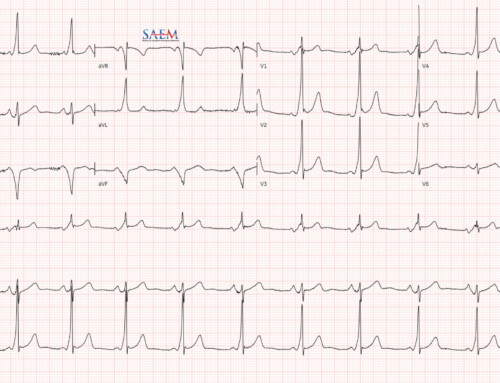Bottom Line

Why It’s Important for Emergency Medicine
- We’ve been told that you just can’t accurately read cardiac ischemia on an EKG in the setting of a LBBB – even when you apply the Sgarbossa criteria. Its specificity is great (~98%), but with a sensitivity of around 20%, you’re missing a whole lot of acute MI’s.
- Part of the problem is that LBBBs normally produce an ST-elevation in V1-V4, obscuring your ability to identify anterior MI’s. The original Sgarbossa criteria tries to solve this with its 3rd component: an ST-elevation in excess of 5 mm identifies an acute MI. Well, you can imagine that if the entire EKG suffers from low-voltage, the ST-elevation may not reach 5 mm, and you’d still miss acute MI’s.
- As with everything in life, proportions should matter more than absolute size! This universal rule applies to the ST-elevations in LBBBs as well. Using a ratio of ST-elevation / S-wave < -0.25 will identify almost twice as many acute MI’s as using an absolute cutoff.
Major Points1
- 33 Study EKGs versus 129 matched controls
| Sens | Spec | + LR | – LR | |
| Modified Rule | 91 | 90 | 9.0 | 0.1 |
| Original weighted | 52 | 98 | 22 | 0.5 |
| Original unweighted | 67 | 90 | 6.6 | 0.4 |
Limitations
As you can see, this study is small. And as if the original Sgarbossa wasn’t hard enough to remember, this modified version is not very “user friendly”…
Reviewed by V. Nguyen
MIA 2012 = Most Interesting Articles series of 2012
1.
Smith S, Dodd K, Henry T, Dvorak D, Pearce L. Diagnosis of ST-elevation myocardial infarction in the presence of left bundle branch block with the ST-elevation to S-wave ratio in a modified Sgarbossa rule. Ann Emerg Med. 2012;60(6):766-776. [PubMed]




